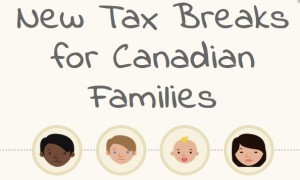 As we are in the midst of the income tax return season, I would like to remind you that we do offer income tax preparation services (yes, we do prepare Quebec tax returns too), as well as book keeping services. Please contact me directly to schedule an appointment.
As we are in the midst of the income tax return season, I would like to remind you that we do offer income tax preparation services (yes, we do prepare Quebec tax returns too), as well as book keeping services. Please contact me directly to schedule an appointment.
Important items to keep in mind for the 2014 tax year:
- Income Tax Return Deadline: April 30th 2015 for most taxpayers. If you or your spouse carried on a business in 2014, you have until June 15th 2015 to file your return. However, your balance, if any, still has to be paid no later than April 30th 2015 to avoid interest and penalty.
- Business Use-Of-Home Expenses: if you meet the requirement for the business use of a work space in your home, you can deduct your business portions of your home-related expenses such as heat, hydro, insurance, property tax, maintenance, mortgage interest (or rent). Be extra careful when it comes to deducting Capital Cost Allowance on the business use part of your home. It might come back and bite you later.
- Motor Vehicle Expenses: if your vehicle is for both personal and business use, make sure to keep a record of the total kilometers you drive to earn income and deduct only the business portion of your vehicle-related expenses. However, you can deduct the full amount of parking fees related to your business activities and supplementary business insurance for your vehicle. And remember to claim the Capital Cost Allowance as well.
- Children’s Fitness Tax Credit: increased to $1,000 per child. Did you keep those receipts? Make sure to claim them.
- Non-Refundable Tax Credit: up to $2,000 per eligible couple. This is a new tax credit that was introduced last year.
You should have received most, if not all, of your receipts and T-slips by now. I suggest that you start a brand-new folder of those and keep them all together, if you have not yet done so. This will be much easier when the time comes for filing your income tax returns.
Remember to always “Dream It. Plan It. Live It.”
I am here to help you on your journey. Do not hesitate to reach out if I can be of any immediate assistance.





